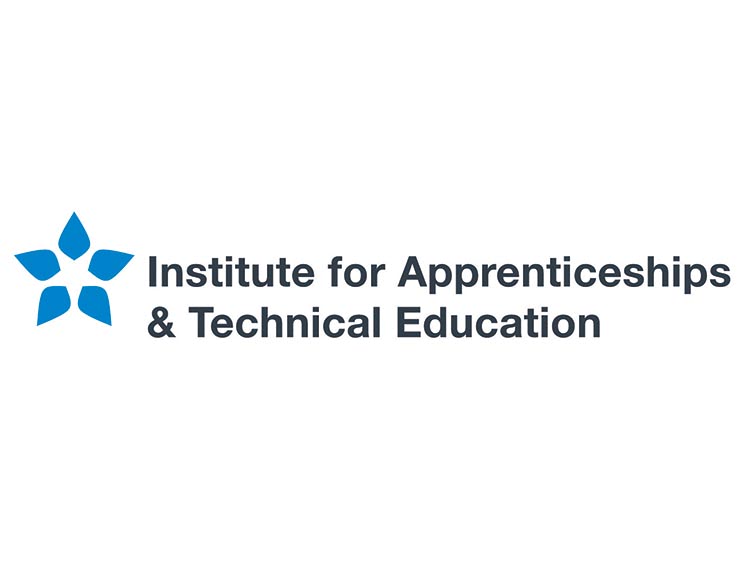Artificial intelligence (AI) data specialist

KSBs
Knowledge
K1: How to use AI and machine learning methodologies such as data-mining, supervised/unsupervised machine learning, natural language processing, machine vision to meet business objectives Back to Duty
K2: How to apply modern data storage solutions, processing technologies and machine learning methods to maximise the impact to the organisation by drawing conclusions from applied research Back to Duty
K3: How to apply advanced statistical and mathematical methods to commercial projects Back to Duty
K4: How to extract data from systems and link data from multiple systems to meet business objectives Back to Duty
K5: How to design and deploy effective techniques of data analysis and research to meet the needs of the business and customers Back to Duty
K6: How data products can be delivered to engage the customer, organise information or solve a business problem using a range of methodologies, including iterative and incremental development and project management approaches Back to Duty
K7: How to solve problems and evaluate software solutions via analysis of test data and results from research, feasibility, acceptance and usability testing Back to Duty
K8: How to interpret organisational policies, standards and guidelines in relation to AI and data Back to Duty
K9: The current or future legal, ethical, professional and regulatory frameworks which affect the development, launch and ongoing delivery and iteration of data products and services. Back to Duty
K10: How own role fits with, and supports, organisational strategy and objectives Back to Duty
K11: The roles and impact of AI, data science and data engineering in industry and society Back to Duty
K12: The wider social context of AI, data science and related technologies, to assess business impact of current ethical issues such as workplace automation and misuse of data Back to Duty
K13: How to identify the compromises and trade-offs which must be made when translating theory into practice in the workplace Back to Duty
K14: The business value of a data product that can deliver the solution in line with business needs, quality standards and timescales Back to Duty
K15: The engineering principles used (general and software) to investigate and manage the design, development and deployment of new data products within the business Back to Duty
K16: Understand high-performance computer architectures and how to make effective use of these Back to Duty
K17: How to identify current industry trends across AI and data science and how to apply these Back to Duty
K18: The programming languages and techniques applicable to data engineering Back to Duty
K19: The principles and properties behind statistical and machine learning methods Back to Duty
K20: How to collect, store, analyse and visualise data Back to Duty
K21: How AI and data science techniques support and enhance the work of other members of the team Back to Duty
K22: The relationship between mathematical principles and core techniques in AI and data science within the organisational context Back to Duty
K23: The use of different performance and accuracy metrics for model validation in AI projects Back to Duty
K24: Sources of error and bias, including how they may be affected by choice of dataset and methodologies applied Back to Duty
K25: Programming languages and modern machine learning libraries for commercially beneficial scientific analysis and simulation Back to Duty
K26: The scientific method and its application in research and business contexts, including experiment design and hypothesis testing Back to Duty
K27: The engineering principles used (general and software) to create new instruments and applications for data collection Back to Duty
K28: How to communicate concepts and present in a manner appropriate to diverse audiences, adapting communication techniques accordingly Back to Duty
K29: The need for accessibility for all users and diversity of user needs Back to Duty
Skills
S1: Use applied research and data modelling to design and refine the database & storage architectures to deliver secure, stable and scalable data products to the business Back to Duty
S2: Independently analyse test data, interpret results and evaluate the suitability of proposed solutions, considering current and future business requirements Back to Duty
S3: Critically evaluate arguments, assumptions, abstract concepts and data (that may be incomplete), to make recommendations and to enable a business solution or range of solutions to be achieved Back to Duty
S4: Communicate concepts and present in a manner appropriate to diverse audiences, adapting communication techniques accordingly Back to Duty
S5: Manage expectations and present user research insight, proposed solutions and/or test findings to clients and stakeholders. Back to Duty
S6: Provide direction and technical guidance for the business with regard to AI and data science opportunities Back to Duty
S7: Work autonomously and interact effectively within wide, multidisciplinary teams Back to Duty
S8: Coordinate, negotiate with and manage expectations of diverse stakeholders suppliers with conflicting priorities, interests and timescales Back to Duty
S9: Manipulate, analyse and visualise complex datasets Back to Duty
S10: Select datasets and methodologies most appropriate to the business problem Back to Duty
S11: Apply aspects of advanced maths and statistics relevant to AI and data science that deliver business outcomes Back to Duty
S12: Consider the associated regulatory, legal, ethical and governance issues when evaluating choices at each stage of the data process Back to Duty
S13: Identify appropriate resources and architectures for solving a computational problem within the workplace Back to Duty
S14: Work collaboratively with software engineers to ensure suitable testing and documentation processes are implemented. Back to Duty
S15: Develop, build and maintain the services and platforms that deliver AI and data science Back to Duty
S16: Define requirements for, and supervise implementation of, and use data management infrastructure, including enterprise, private and public cloud resources and services Back to Duty
S17: Consistently implement data curation and data quality controls Back to Duty
S18: Develop tools that visualise data systems and structures for monitoring and performance Back to Duty
S19: Use scalable infrastructures, high performance networks, infrastructure and services management and operation to generate effective business solutions. Back to Duty
S20: Design efficient algorithms for accessing and analysing large amounts of data, including Application Programming Interfaces (API) to different databases and data sets Back to Duty
S21: Identify and quantify different kinds of uncertainty in the outputs of data collection, experiments and analyses Back to Duty
S22: Apply scientific methods in a systematic process through experimental design, exploratory data analysis and hypothesis testing to facilitate business decision making Back to Duty
S23: Disseminate AI and data science practices across departments and in industry, promoting professional development and use of best practice Back to Duty
S24: Apply research methodology and project management techniques appropriate to the organisation and products Back to Duty
S25: Select and use programming languages and tools, and follow appropriate software development practices Back to Duty
S26: Select and apply the most effective/appropriate AI and data science techniques to solve complex business problems Back to Duty
S27: Analyse information, frame questions and conduct discussions with subject matter experts and assess existing data to scope new AI and data science requirements Back to Duty
S28: Undertakes independent, impartial decision-making respecting the opinions and views of others in complex, unpredictable and changing circumstances Back to Duty
Behaviours
B1: A strong work ethic and commitment in order to meet the standards required. Back to Duty
B2: Reliable, objective and capable of independent and team working Back to Duty
B3: Acts with integrity with respect to ethical, legal and regulatory ensuring the protection of personal data, safety and security Back to Duty
B4: Initiative and personal responsibility to overcome challenges and take ownership for business solutions Back to Duty
B5: Commitment to continuous professional development; maintaining their knowledge and skills in relation to AI developments that influence their work Back to Duty
B6: Is comfortable and confident interacting with people from technical and non-technical backgrounds. Presents data and conclusions in a truthful and appropriate manner Back to Duty
B7: Participates and shares best practice in their organisation, and the wider community around all aspects of AI data science Back to Duty
B8: Maintains awareness of trends and innovations in the subject area, utilising a range of academic literature, online sources, community interaction, conference attendance and other methods which can deliver business value Back to Duty











Responses